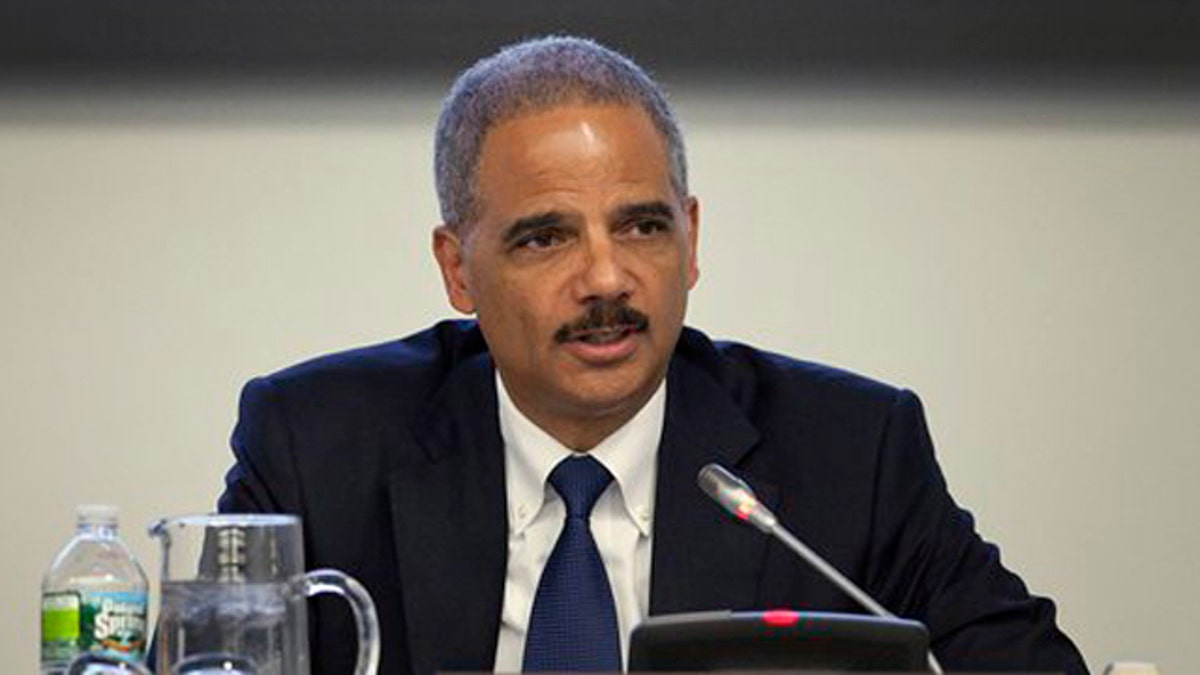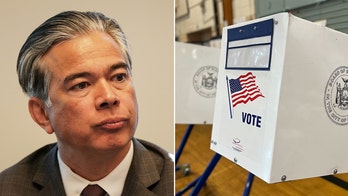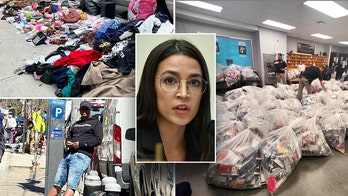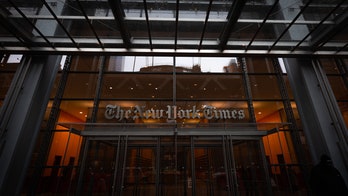
Attorney General Eric Holder speaks during a conference at the 66th session of the General Assembly at United Nations headquarters on Sept. 19. (AP)
For Attorney General Eric Holder, Tuesday could be a "do or die" moment.
Holder appears before a congressional committee on Operation Fast and Furious for the first time since May, when he said he had only heard about the controversial anti-gunrunning program "a few weeks" prior. Yet a U.S. senator had personally told him about Fast and Furious a few months before his testimony.
Thirty-four House members already have called for Holder to resign, along with the National Rifle Association, and more could join the chorus depending on Holder's testimony Tuesday. Sources close to the investigation say other lawmakers want Holder out but have declined to say so publicly out of deference to Sen. Charles Grassley, the quiet and deliberate Republican from Iowa.
Grassley has spearheaded the Fast and Furious probe since the killing last December of Border Patrol Agent Brian Terry, whose body was found near two guns traced to Fast and Furious. If Grassley says Holder must go, at least some Senate colleagues are expected to close ranks behind him.
GOP CHALLENGES TUESDAY
Investigators do not have a smoking-gun document, an e-mail to or from Holder that explicitly says that the U.S. government helped smuggle guns to Mexico. What they have are contradictory statements on Holder's behalf, documents suggesting he should have known about the operation and e-mails and briefings to Holder's inner circle that indicate they did know what was happening but chose not to stop it. For instance:
EVIDENCE AGAINST HOLDER
* In January 2010, just two months after Fast and Furious began, top Justice officials learned in a briefing paper that a "large scale conspiracy of 15 straw buyers had purchased over 500 weapons" from Phoenix gun stores, 52 of which had already been recovered at three crime scenes in Mexico, sometimes within a day of being purchased.
While the assistant U.S. attorney in the case said that alone wasn't enough evidence to prompt an arrest, others disagree. Why? Because agents say in those first few months they had enough evidence for a "lying and buying" case. That is, they could prove the straw buyer made a false statement when they claimed on Form 4473 the firearm was purchased for personal use. Surveillance and trace data showed the weapons were bought for someone else.
* In February 2010, Assistant Attorney General Lanny Breuer, the number two man at Justice, was informed ringleader Manuel Celis Acosta was "acquiring heavy weapons," military-grade hardware that included lethal .50-caliber sniper rifles. Agents refer to these as "game changers." A pistol going south is not going to overwhelm Mexican police, but 34 .50 calibers (the number sold in Fast and Furious) would allow a cartel to stop, if not defeat all but the most elite Mexican Army units.
* In March 2010, then acting Deputy Attorney General Gary Grindler and, within weeks, Holder's chief of staff attended a Power Point presentation that detailed the type, number and cost of every weapon bought by the operation's criminal suspects. They and other Department of Justice officials watched video of straw buyers walk into various gun stores and walk out out with boxes of assault rifles. They saw more video of garages filled from floor to ceiling with boxes of guns, and days later the same garage was empty, the guns having been moved south.
At that time, sources say, it was obvious the ATF's Phoenix office was "allowing" known straw buyers to buy weapons illegally and smuggle them to Mexico. It was, even then, a classic case of "gun walking," a practice the Justice Department insisted to Congress in February did not happen in Fast and Furious.
* In April 2010, Deputy Attorney General Jason Weinstein helped assign two lawyers from the Justice Department in Washington to prosecute two gun cases in Arizona, including Fast and Furious. Weinstein told Breuer ATF Phoenix allowed "gun walking in an effort to get upstream co-conspirators but only got the stars and didn't recover many guns" in the second operation, known as Wide Receiver. Weinstein called gun walking "negative" and potentially "embarrassing." Many believe Holder learned then about "gun walking" and say ATF Phoenix would have been told then to stop it, if DOJ wanted to.
* In June 2010, at least four top Justice officials received a monthly Southwest Border Strategy Group report, which said, "Phoenix ATF Agents are conducting almost daily surveillance (on the purchase of 1,608 guns) and had identified over a dozen stash houses where (62 Fast and Furious suspects) deposited their firearms prior to arranging for further transportation south."
Again, sources close to this case say, it's difficult for anyone, let alone an experienced prosecutor, not to conclude the ATF was knowingly allowing criminals to buy and smuggle guns, not once but hundreds of times. For instance, by July, Uriel Patino alone, while on food stamps, had been allowed to buy and transfer more than 600 weapons to Acosta, 90 percent of which were AK-47s.
* In early July 2010, Holder himself began to receive a weekly report from the National Drug Intelligence Center on Fast and Furious. The first one, July 5, said ringleader Acosta and his straw buyers had spent $1 million on more than 1,500 weapons for the Sinaloa cartel. Congressional investigators say Holder received at least 5 such reports.
TOP DOWN OR BOTTOM UP?
So far, documents released by DOJ suggest Fast and Furious was an idea hatched by an out-of-control U.S. Attorney's Office in Arizona and carried out by a few rogue ATF agents in Phoenix. No prior approval from Washington apparently was given. Seven agents and one attorney allegedly kept both ATF management and DOJ lawyers in Washington in the dark for 14 months while they allowed the largest drug cartel in Mexico to smuggle more than 2,000 guns across an international border. And even after the death of a Border Patrol agent, this small unit of agents successfully covered it up from the the entire ATF, DOJ and most of Congress.
Agents in the case however, paint an entirely different picture. They suggest this was a top down strategy created in Washington, DC, shortly after President Obama took office as a means to renew an assault weapons ban and require a registry for anyone wanting to buy more than one rifle or "long gun." They point to the "DOJ Cartel Strategy" authored in October 2009 by Deputy Attorney General David Ogden and distributed by e-mail to most of America's top law enforcement officials, from the directors of the FBI and DEA to those at DOJ. Once approved, the Phoenix ATF office was chosen to carry it out with a $10 million dollar stimulus grant, and agents from around the U.S. were brought in to carry it out.
Tuesday viewers should expect a full-court Republican attack and an aggressive Democratic defense, as lawmakers expect to find out what Holder knew -- and when he learned that an agency under his supervision was letting guns be smuggled to Mexico, allegedly behind his back.




